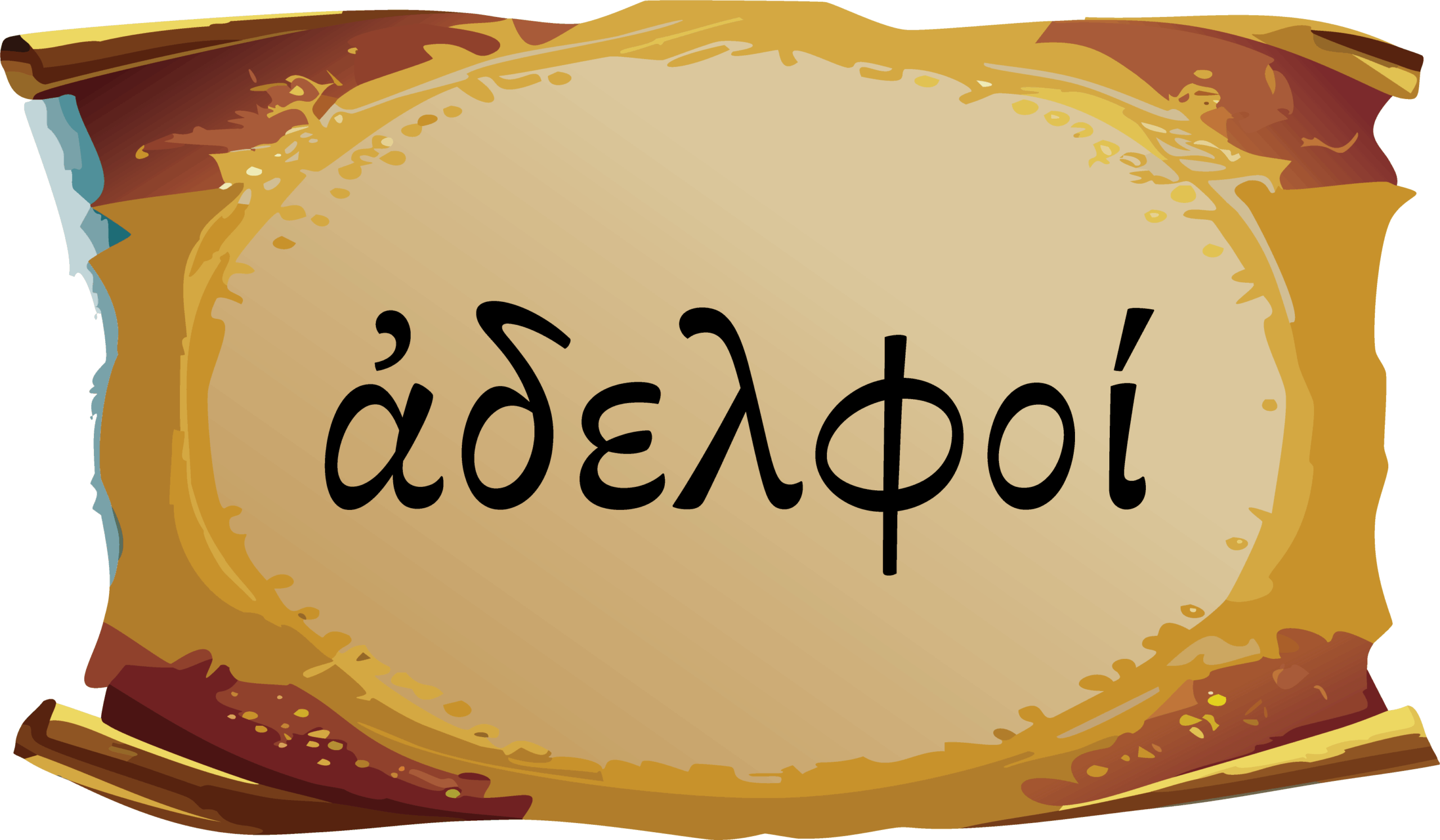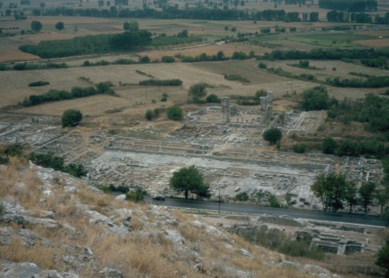The writings of the New Testament frequently address the community of believers as adelphoi. Some English Bible translations use the term “brothers” or “brethren” to translate this term. Others use “brothers and sisters.” Likewise, some Christian traditions stress the inclusion and equality of women and men, while others focus more on male leadership in early Christianity. These varying emphases show the impact of how one Greek word, adelphoi, is translated.
Is it “brothers” or “brothers and sisters”?
Adelphoi is commonly used in ancient Greek, the Septuagint, and the New Testament to refer to groups of people. At its most basic level, it is the plural form of the word adelphos,“brother,” representing males from the same family (examples: Gen 42:32; Matt 13:55). The New Testament letters follow a second meaning, using adelphoi to refer to a mixed-gender group, in this case, a community of Christ-believers of diverse genders. This is like how people today might say “friends” when addressing men and women together.
For centuries, most English Bibles only rendered adelphoi as “brothers” or “brethren.” This option was partly due to historical language norms. Older English often employed “brothers/brethren” in a general sense, just as “mankind” was once used to mean “humankind.” Nevertheless, many biblical scholars and translators argue that “brothers and sisters” (or sisters and brothers) is more accurate.
For instance, writing to the mixed-gender members of the Corinthian community about the issue of head covering (1 Cor 11:1–16) and problems at the Lord’s Supper (11:17–34), Paul addresses the congregations as adelphoi mou (11:33). It is more precise to translate this phrase as “my brothers and sisters” than “my brothers” since those who partake of the communal meal include men and women.
Why does this translation issue matter?
How we translate adelphoi affects how people understand gender roles in the Bible and the nature of leadership in the community of Christ-believers. If a translation solely employs “brothers,” some might mistakenly think the biblical message is directed only at men and that the early Christian communities exclusively consisted of men. Using “brothers and sisters” highlights the diversity and inclusivity of the early Christian movement from the start.
More importantly, this issue also connects with women’s and men’s roles in early church leadership. If Paul frequently addressed both women and men as adelphoi in his letters, it suggests that early Christian communities saw women as equal participants and leaders. For example, after a long list of mixed-gender leaders and members in Rom 16:1–15, Paul urges the adelphoi to guard themselves against dissension (16:17). It is more correct to translate adelphoi as “brothers and sisters” instead of “brothers” as this command applies to all participants and the leaders in the community.
Some churches today resist inclusive translations, fearing they introduce modern ideas into ancient texts. However, others rightly argue that recognizing women in these passages restores the original inclusive meaning of adelphoi.
Bibliography
- deSilva, David A. Honor, Patronage, Kinship, and Purity: Unlocking New Testament Culture. 2nd ed. IVP Academic, 2022.
- Ibita, Ma. Marilou S. “Including the Hungry Adelphoi: Exploring Pauline Points of View in 1 Corinthians 11:17–34.” Pages 159–84 in By Bread Alone: The Bible through the Eyes of the Hungry. Edited by Sheila E. McGinn, Lai Ling Elizabeth Ngan, and Ahida Calderon Pilarski. Fortress, 2014.
- Pilch, John J., and Bruce J. Malina, eds. Handbook of Biblical Social Values. Rev. ed. Hendrickson, 1998.





